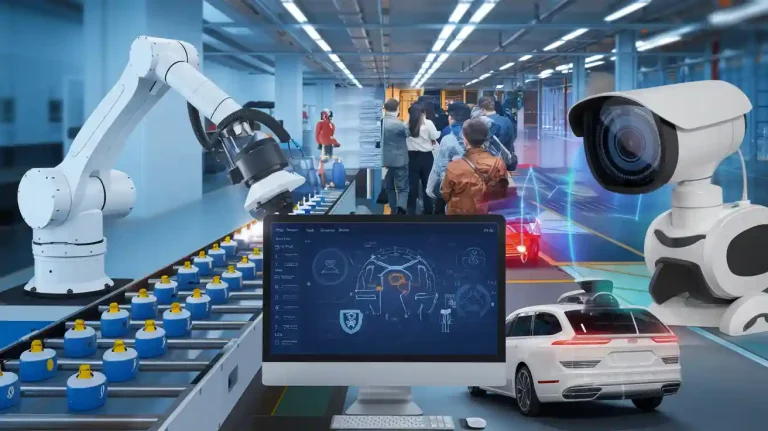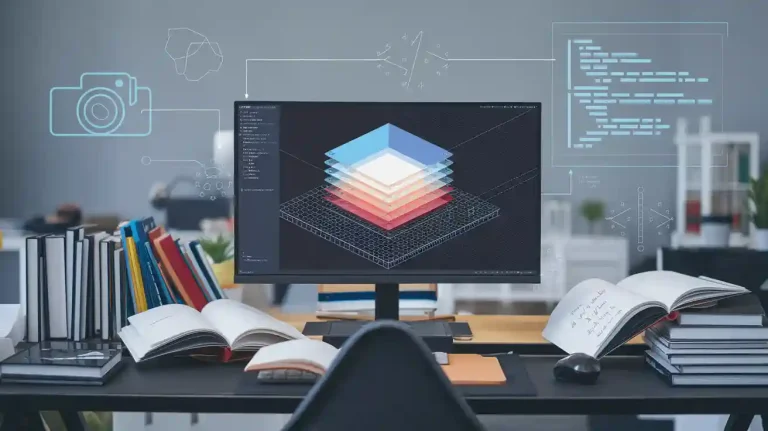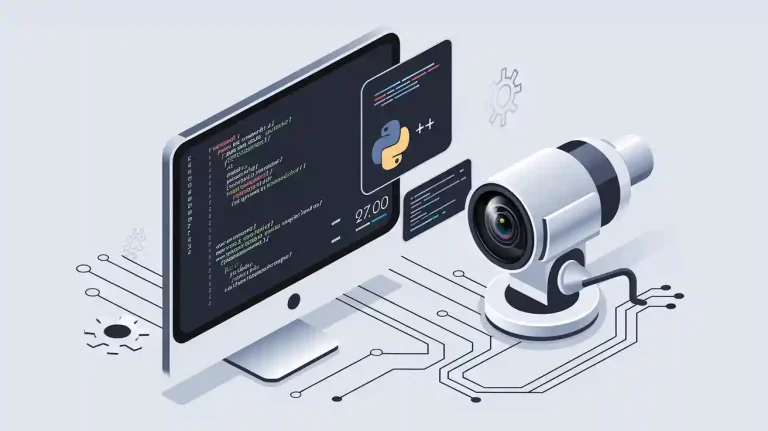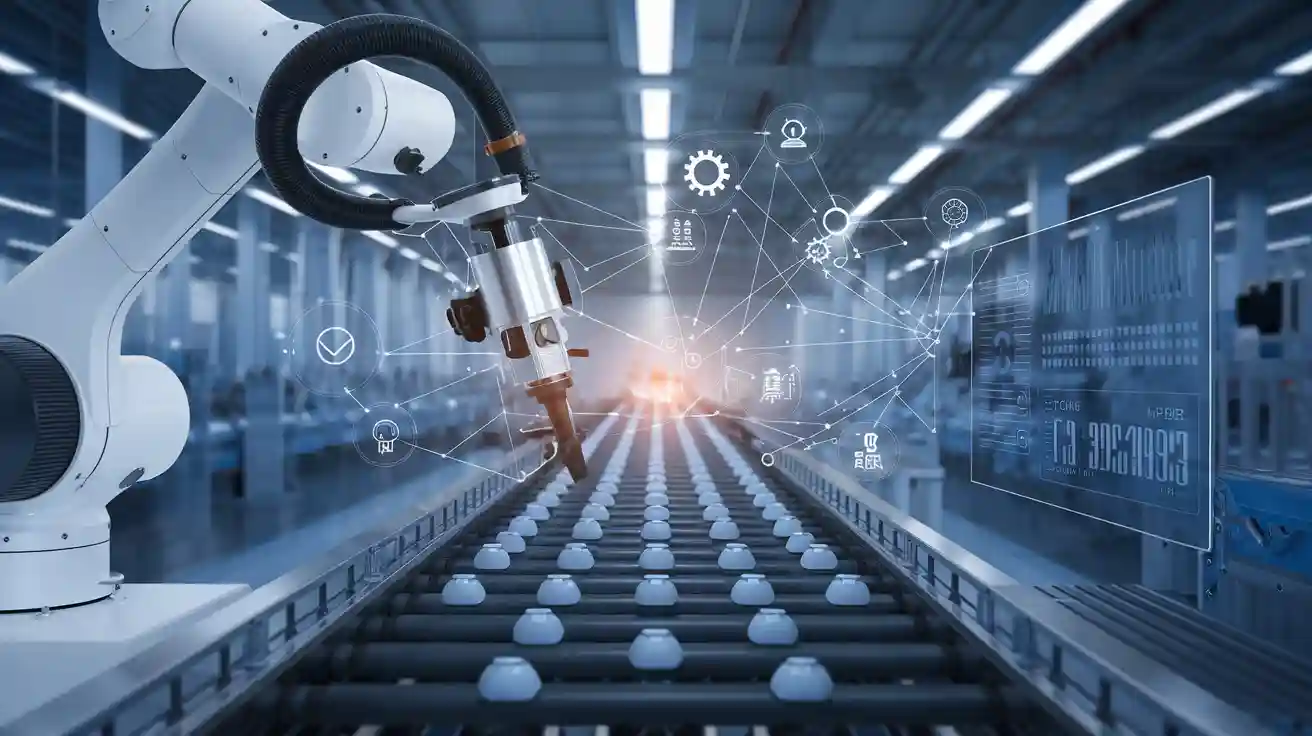
A TP machine vision system uses advanced technology to identify true positives, which means it accurately detects real defects during inspection. These machine vision systems play a critical role in quality control by ensuring only products that meet strict standards move forward. In modern industrial automation, machine vision systems provide faster and more reliable inspection results than traditional methods. For example, some machine vision systems achieve over 97% accuracy in defect detection, outperforming manual inspection. The use of deep learning in a machine vision system allows for better control and fewer errors, making it essential for anyone focused on inspection, control, or quality control.
Key Takeaways
- TP machine vision systems use advanced technology to detect real defects accurately, improving product quality and reducing manual inspection.
- These systems combine key components like lighting, lenses, cameras, processing hardware, and software to deliver fast and reliable inspections.
- High accuracy with strong true positive rates helps manufacturers catch defects early, lowering waste and boosting efficiency.
- AI integration enables real-time, precise decisions on edge devices, making inspections faster and more adaptable without relying on cloud services.
- TP machine vision systems easily integrate with existing factory equipment, supporting automation and consistent quality across many industries.
Definition
TP Machine Vision System
A TP machine vision system uses advanced imaging and artificial intelligence to automate inspection tasks in manufacturing and industrial environments. The "TP" stands for "True Positives," which highlights the system’s focus on correctly identifying real defects or features during inspection. These systems combine 2-D and 3-D vision technologies to handle complex inspection requirements, such as checking product feeding, surface quality, and dimensional accuracy.
Manufacturers rely on TP machine vision systems to meet strict quality control requirements. These inspection systems work quickly and accurately, reducing the need for manual checks. They also help control costs by lowering the risk of human error and minimizing downtime. Many machine vision systems come with intelligent algorithms and user-friendly interfaces, making them easy to install and adjust. Their robust design allows them to operate in harsh industrial settings, ensuring consistent performance and high product quality.
TP machine vision systems support robotic operations by enabling precise part handling and assembly without complex programming. This integration improves efficiency and ensures that only products meeting quality standards move forward in the production process.
True Positives in Machine Vision
In machine vision systems, a true positive occurs when the system correctly identifies an object or defect that actually exists in the inspected item. For example, if an inspection system detects a scratch on a metal part and that scratch is present in reality, this counts as a true positive. The goal of a TP machine vision system is to maximize true positives while minimizing false positives and false negatives.
Engineers measure true positives by comparing the system’s inspection results to ground truth data. They use metrics such as precision and recall to evaluate performance. Precision shows the ratio of true positives to all positive identifications, indicating how many detected defects were real. Recall measures the ratio of true positives to all actual defects, showing how many real issues the system found. High precision and recall scores mean the inspection system performs well in identifying defects and maintaining quality.
Machine vision systems powered by machine learning, such as those using convolutional neural networks (CNNs), achieve high precision and recall rates. For instance, some inspection systems reach precision scores of 0.96 and recall rates of 0.94 in assembly monitoring. These results lead to better defect detection, fewer manual inspections, and improved productivity. By supporting real-time analysis and scalability, TP machine vision systems help manufacturers meet demanding quality control standards and boost operational efficiency.
- Key benefits of true positives in machine vision systems:
- Accurate defect detection
- Reduced manual inspection
- Improved product quality
- Enhanced operational control
Components
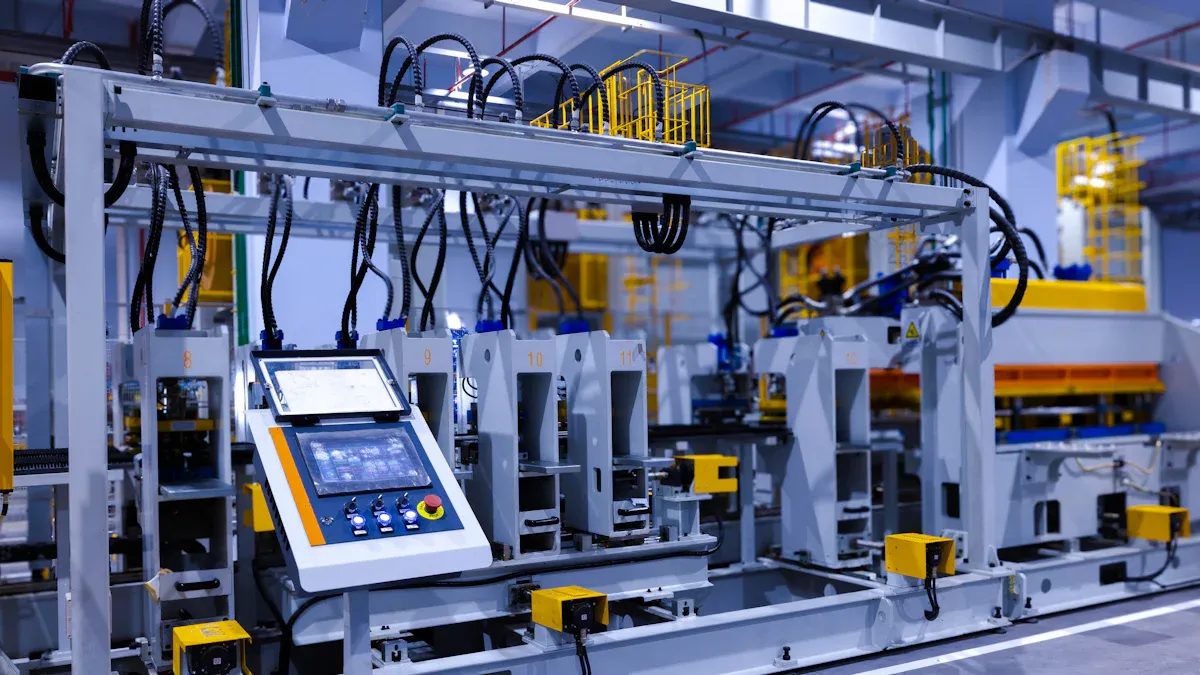
A TP machine vision system relies on several key components to achieve high image acquisition capabilities and accurate inspection results. Each part plays a unique role in ensuring the system delivers reliable performance in industrial environments.
Lighting
Lighting provides the foundation for clear and consistent images. Proper illumination reduces shadows and glare, which helps the image sensor capture sharp details. LED lighting, especially when matched to the camera’s sensitivity, improves image contrast and defect detection. For example, using narrow wavelength LEDs with matching filters blocks unwanted ambient light and enhances image quality. High-intensity LED spotlights offer stable and powerful illumination, which is essential for precise inspection tasks.
Lens
The lens focuses light onto the image sensor, directly affecting image sharpness and measurement accuracy. Fixed focal length lenses are common because they offer a stable field of view and work well for many inspection tasks. Telecentric lenses provide consistent magnification, low distortion, and a wide depth of field. These features are important for applications that require high precision, such as measuring parts or checking alignment. The right lens ensures the system captures all necessary details for effective image processing.
Camera
The camera, equipped with a high-quality image sensor, captures images for analysis. Image sensors convert light into electrical signals, influencing image quality, speed, and sensitivity. Industrial cameras come in various resolutions, from 400,000 pixels to over 20 million pixels, and support both color and monochrome modes. The choice of camera and image sensor affects how well the system detects defects and maintains precision. Reliable cameras with robust image sensors support fast and accurate image acquisition capabilities.
Processing Hardware
Processing hardware handles image processing and system control. Advanced computing platforms, such as those with GPUs or FPGAs, enable real-time image analysis and decision-making. Features like ultrafast photocurrent generation and in-sensor computing reduce latency and improve reliability. Durable hardware ensures the system operates smoothly, even in harsh industrial settings, and supports high-speed inspection without sacrificing accuracy.
Software
Software drives the image analysis and decision-making process. Modern machine vision software supports deep learning, fast iteration, and robust performance under changing conditions. It uses structured metrics like precision and recall to benchmark true positive rates. Flexible and customizable software integrates with factory systems and provides intuitive interfaces for users. Reliable software ensures the system maintains high precision and adapts to new inspection challenges.
Each component, from lighting to software, contributes to the overall performance of a TP machine vision system. Their combined strengths enable accurate, fast, and reliable inspection in demanding industrial environments.
Key Features

Accuracy and True Positives
TP machine vision systems stand out for their exceptional accuracy and ability to identify true positives during inspection. These inspection systems use advanced algorithms to distinguish real defects from normal variations. In a typical scenario, a machine vision system inspected 1,000 parts—990 good and 10 bad—and achieved an overall accuracy of 99.4%. The system correctly classified 994 parts, showing that these inspection systems can reach accuracy rates above 99% in controlled environments. Many real-world machine vision systems achieve accuracy rates above 87%, with some models improving accuracy by up to 3.68% when using offline methods.
Precision and recall serve as the main metrics for evaluating inspection systems. Precision measures how many detected defects are real, while recall shows how many actual defects the system finds. High precision and recall scores mean the system rarely misses defects and avoids unnecessary rejection of good products. Machine vision systems use AI-driven inspection to adapt and learn from data, which improves detection accuracy over time and reduces false positives. Regular calibration, model tuning, and high-quality training data help maintain high true positive rates and minimize false alarms. These features ensure reliable inspection and support high quality control standards.
High precision and recall in inspection systems lead to fewer manual checks, less rework, and more consistent product quality.
Speed and Real-Time Processing
Speed is a defining feature of TP machine vision systems. These inspection systems analyze images and make decisions within milliseconds. This rapid processing eliminates bottlenecks caused by manual inspection and maximizes production efficiency. Real-time feedback allows instant detection of issues, enabling immediate adjustments without stopping the production line. Early flaw detection prevents defective products from advancing, reducing waste and unnecessary rejection.
Machine vision systems capture dynamic data on moving parts and complex shapes. Real-time monitoring provides comprehensive insight into the production process. Immediate identification and flagging of deviations prevent faulty components from continuing in production. Real-time data processing shortens measurement cycles and accelerates production. Instant insights enable quick correction of deviations, enhancing quality control and efficiency.
- Machine vision systems operate with speed, precision, and reliability beyond human capability.
- Continuous data capture and analysis allow manufacturers to adjust processes without halting production.
- Real-time data integration increases flexibility, allowing rapid adaptation to changing specifications.
AI Integration
AI integration transforms TP machine vision systems into powerful inspection tools. AI enables real-time, accurate, and secure decision-making directly on edge devices. Lightweight AI models, such as YOLOv5, run efficiently on specialized hardware like NVIDIA Jetson, balancing speed and accuracy. Local edge processing reduces latency from hundreds of milliseconds to just a few milliseconds, enabling immediate responses during inspection.
AI supports complex vision tasks, including object recognition, image classification, feature extraction, and anomaly detection. These tasks do not require cloud dependency, which improves privacy and reduces bandwidth costs. Model optimization techniques, such as pruning and quantization, allow AI models to run on resource-constrained devices while maintaining accuracy comparable to expert human performance. Hybrid approaches combine edge AI for real-time decisions with cloud AI for deeper analysis, balancing speed and accuracy.
AI integration empowers machine vision systems to deliver faster, more reliable, and scalable performance in diverse industrial environments.
The following table shows common AI algorithms used in TP machine vision systems for defect detection:
| AI Algorithm(s) | Application Context | Supporting Reference Summary |
|---|---|---|
| Neural Networks | Potato defect detection | Neural networks used for defect detection in agricultural products (potatoes). |
| Support Vector Machines (SVM) | Potato defect detection | SVM applied alongside neural networks for defect detection. |
| Deep Learning (Deep Neural Networks) | Mobile phone cover glass defect detection | Deep neural networks applied for detecting defects in mobile phone cover glass. |
| Deep Learning + Hough Transform | Product defect inspection | Integration of deep learning with traditional image processing (Hough transform) for defect detection. |
| Machine Learning + Image Processing | Tomato defect discrimination and grading | Machine learning combined with image processing for defect grading in tomatoes. |
| Deep Learning | Fabric defect detection | Deep learning algorithms used for automatic detection and classification of fabric defects. |
| Ensemble Classifiers optimized by PSO | Leather surface defect detection | Ensemble classifiers optimized by particle swarm optimization (PSO) used for defect detection in leather. |
| Machine Learning Classifiers | OLED panel defect recognition | Design and evaluation of classifiers for defect recognition in OLED panels. |
| Intelligent Machine Vision Systems | Nuclear-fuel rod groove defect detection | Use of intelligent machine vision systems likely involving AI algorithms such as deep learning or classifiers. |
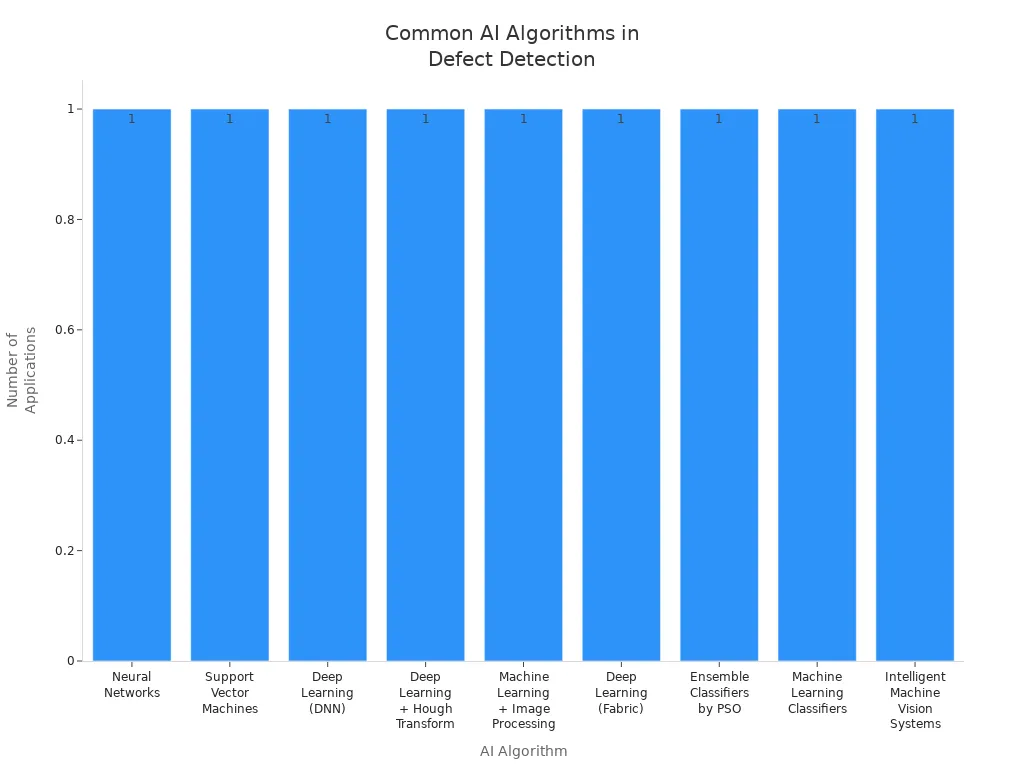
System Integration
System integration allows TP machine vision systems to work seamlessly with existing industrial automation systems. These inspection systems use bespoke software packages and are compatible with standard PLC platforms for control. They provide feedback and control signals to automation equipment for tasks such as alignment, robot guidance, part presence, and orientation detection. Vision systems support barcode traceability and print verification, linking inspection results directly to automation processes.
Integration includes handling components from bulk feeding, orientation, inspection, and placement into special purpose machines. These systems enable 100% quality control by replacing sample testing with continuous inspection, improving product quality and reducing costs. The 10BASE-T1S Ethernet standard helps integrate machine vision systems with industrial automation by replacing older Fieldbus protocols and eliminating the need for gateways. This standard enables reliable, seamless connectivity between vision systems and industrial networks, simplifying communication within control panels and distributed devices.
Advanced vision systems face challenges during integration, such as high accuracy requirements, the need for explainable results, and compatibility with legacy equipment. Skilled personnel and careful planning ensure successful implementation and minimal disruption.
System integration supports automation of repetitive tasks, reduces manual intervention, and ensures high quality standards across production lines. Advanced vision systems provide the flexibility and scalability needed for future upgrades and retraining, supporting ongoing improvements in production efficiency and quality control.
Quality Control Benefits
Improved Quality
TP machine vision systems deliver higher product quality in automotive manufacturing. These systems use advanced AI models and precise imaging to detect every defect, even those too small for human eyes. Automated inspection ensures that only products meeting strict quality control standards move forward. By combining 2D and 3D data analysis, the system identifies defects in different shapes and positions. Controlled lighting and camera setups provide reliable images for accurate inspection. The technology supports in-line inspection, so production speed stays high while quality remains consistent. Manufacturers can quickly remove defective products, which leads to fewer customer complaints and better brand reputation. Digital twins and traceable quality control help companies improve their processes over time.
Reduced Errors
Machine vision systems reduce human error in quality control by automating the inspection process. High-resolution cameras and AI algorithms outperform human inspectors in detecting defects. These systems operate in real time, providing instant feedback and faster decision-making. Operators receive clear information about possible defects, which helps them focus on real issues and avoid missing errors. The system highlights probable defects, increasing productivity and reducing inspection time. Continuous learning from past mistakes improves the model’s accuracy, further lowering error rates. Automated inspection also reduces the risk of defective products reaching customers, which protects both safety and reputation.
Automated inspection in automotive manufacturing increases efficiency and ensures consistent quality by minimizing human mistakes.
Industrial Applications
TP machine vision systems play a vital role in many industries. In automotive manufacturing, they inspect car parts, verify assembly, and check engineering specifications. These systems detect defects in real time, preventing defective products from moving forward. In electronics, machine vision inspects circuit boards and components for defects, ensuring only high-quality items reach the market. The pharmaceutical industry uses these systems for tableting, capsule filling, and packaging inspection, reducing the risk of defective products. Food and beverage companies rely on machine vision for grading produce and checking packaging. Medical device manufacturers use these systems to detect defects in surgical instruments, while power generation and oil sectors use them for equipment inspection and safety monitoring.
| Industry | Application Example |
|---|---|
| Automotive | Inspecting parts, assembly verification, defect detection |
| Electronics | PCB inspection, component defect detection |
| Pharmaceuticals | Packaging, labeling, and defect inspection |
| Food & Beverage | Grading, packaging, and defect detection |
| Medical Devices | Surgical instrument inspection for defects |
A case study from Singapore shows that replacing manual inspection with automated machine vision in electronics manufacturing led to zero customer complaints and increased production capacity. The system detected defects both inline and offline, ensuring defective products never reached customers. This example highlights the value of enhanced quality control and rejection of defective products in high-volume environments.
TP machine vision systems combine advanced hardware and software to automate image acquisition, analysis, and decision-making. These systems deliver high accuracy, speed, and reliability, making them essential for quality control in industrial automation.
- They inspect small details, operate without contact, and improve safety.
- Manufacturers benefit from reduced waste, consistent quality, and lower labor costs.
Organizations can assess their needs by mapping defect profiles and production constraints to system capabilities, ensuring optimal inspection outcomes.
FAQ
What does "TP" mean in a machine vision system?
"TP" stands for "True Positives." The system identifies real defects or features during inspection. High true positive rates mean the system accurately detects issues that actually exist.
How does a TP machine vision system improve quality control?
A TP machine vision system finds defects quickly and accurately. It reduces human error and ensures only high-quality products move forward. Manufacturers see fewer mistakes and better product consistency.
Can a TP machine vision system work with existing factory equipment?
Yes. Most TP machine vision systems integrate with standard automation platforms. They send feedback and control signals to robots, conveyors, and other machines for seamless operation.
What industries use TP machine vision systems?
Automotive, electronics, pharmaceuticals, food and beverage, and medical device industries use these systems. Each industry benefits from faster inspections and improved defect detection.
Are TP machine vision systems difficult to maintain?
Most systems feature user-friendly interfaces and automated calibration. Operators can perform routine maintenance with minimal training. Regular software updates keep the system accurate and reliable.
See Also
How To Properly Position Equipment For Machine Vision
Exploring Pixel-Based Machine Vision In Today’s Applications
Understanding Pattern Recognition In Machine Vision Systems
A Look At Inspection Machine Vision Systems In 2025
Essential Camera Resolution Concepts For Machine Vision Systems







